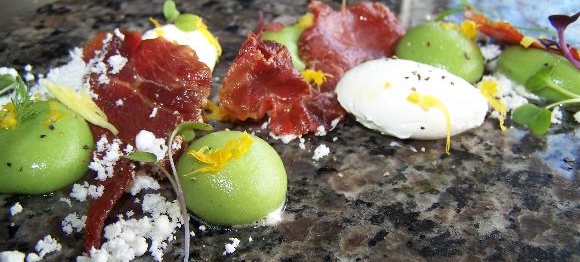
Chemical Innovation: Colossal Peas
The world of food today is a much different place than the yesterdays that create our rich culinary history. The dishes that are being defined as the “New American Cuisine” are continuously evolving and developing as our chefs are becoming educated and driven. Our local Chefs are making their mark in the gastronomic world with the transition from the Nouvelle Cuisine era into the inception of the “Molecular” Kitchen. It is an exciting time to be in the industry right now, it is an exciting time to be a cook, the possibilities continue to prove themselves endless. Just when you learn the basic techniques, everything changes and becomes fascinating and unfamiliar.
A simple equation: Sodium Alginate + Calcium Lactate = Magic
A new technique making more and more of an appearance on menus across the country; with many alias’ such as “Raviolis”, “Pearls”, Orbs, and “Caviar”. Many of these nicknames being a clever play on words and hiding the true identity of the Chemical masterpiece. Sphereification: A Giant Pea… this is where the introduction of chemistry to a recipe, took my imagination.
Sodium Alginate
I started with a fresh pea puree; seasoned with salt and lemon juice. The amount of Sodium Alginate that I added was approximately 1.5% the total weight of the pea puree. I blended the mixture with an immersion blender until the puree was thick and smooth. In many cases, Sodium Alginate is a compound used as a stabilizer due to its thickening abilities. When in the presence of calcium, the Sodium Alginate has a gelling effect not mixing with the Calcium, instead creating a gel casing protecting the liquid core.
Calcium Lactate
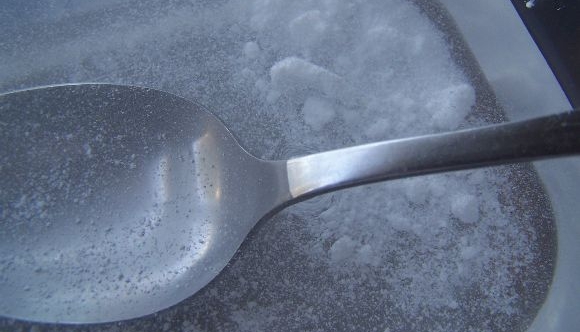
The Calcium was added in a measurement of 1% of the total weight of the water (I.e. 300g of water to 3 grams Calcium) and stirred until the chemical completely dissolved. Many different forms of Calcium compounds are available and each works accordingly with the different ingredients in which you are using. Calcium Lactate works well in the sphereification process as opposed to Calcium Chloride which often comes with a noteable after taste. Calcium Lactate offers the same effect as calcium chloride yet the solution will dissolve in the presence of fat. Calcium Lactate Gluconate is a means to the same ends, only in reverse. You add the Calcium to the puree and “cook” the spheres in a sodium alginate bath. It gives the orbs a longer shelf life.
Procedures:
I set up my Chemical “breading” station. Puree first, Calcium Lactate bath in the middle, then a bath of clean water. A dollop of the puree into the Calcium bath and I let it “marinate” for 1 ½ minutes. I then remove the jellified orbs and cleanse them in the fresh water, letting them rest until I draw them for use.
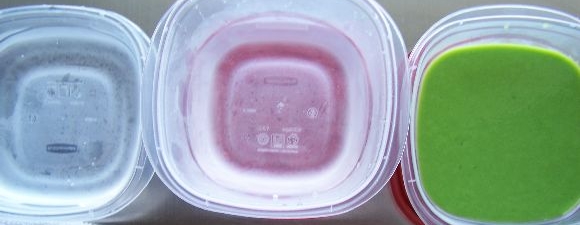

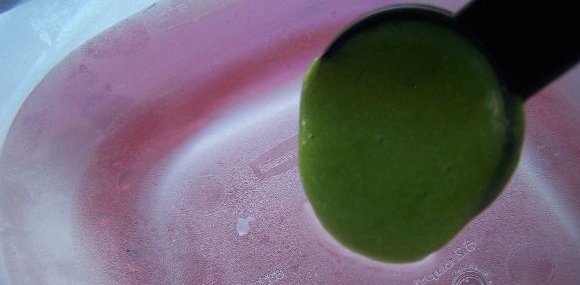
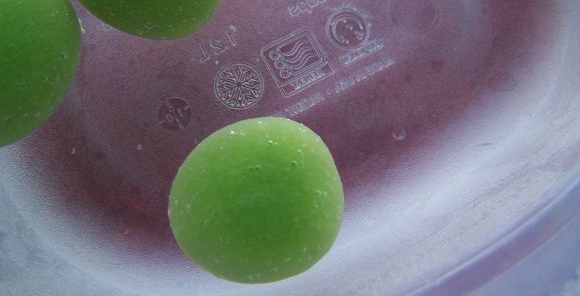
Easy Peasy
It is as simple as proper measurements and a three step chemical bath, now how to apply this to a dish… I was left with an Orb that in the end resembled a Colossal Pea, the rest of the components fell into place representing what I associate with a pea soup.
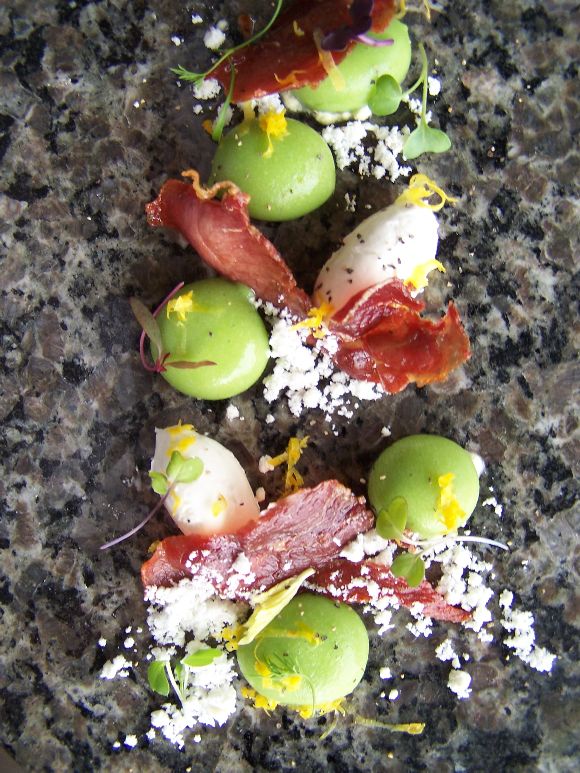
Colossal Peas, Prosciutto Crisps, Lemon Powder, Meyer Lemon, Mascarpone, Fresh Cracked Black Pepper, Micro Greens.
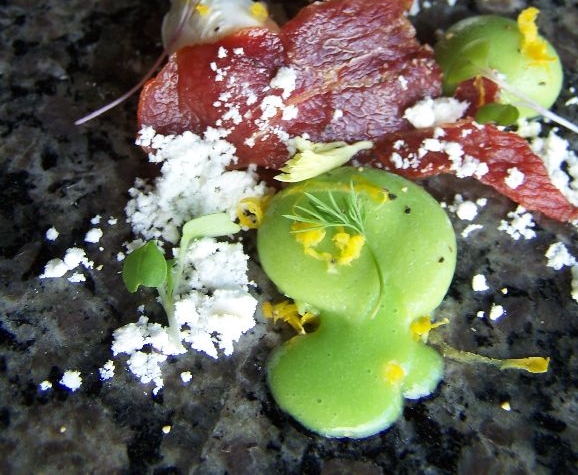
Viola, a fun take on Split Pea Soup. Today, with the young cooks growing curiosities, the industry has made obtaining the ingredients needed for these little experiement a simple task. Many Chefs have written on the subject of cooking in the “Molecular Kitchen” and that information is easily accessible, you just have to exert yourself and do your homework. Chef Will Goldfarb has made purchasing these chemicals as simple as clicking a couple buttons, http://www.willpowder.com/ is his website where you can also read about each ingredient and it’s functions. Where will a new technique take your imagination?
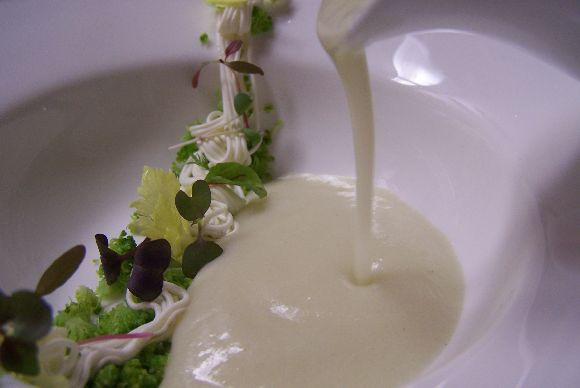
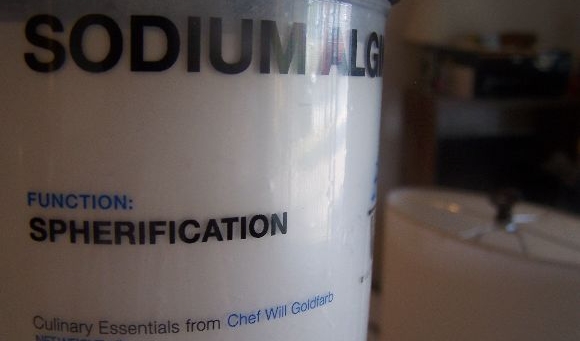
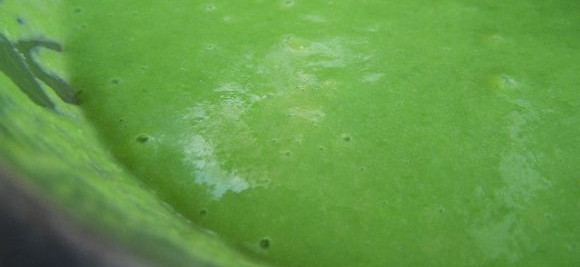
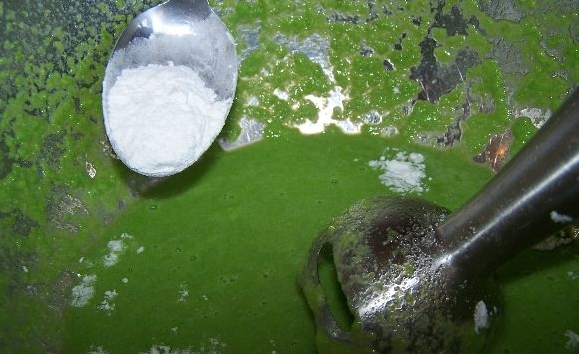
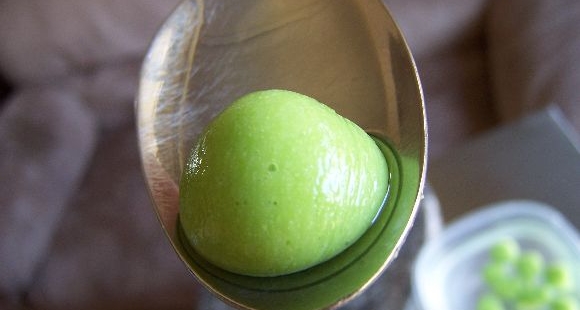
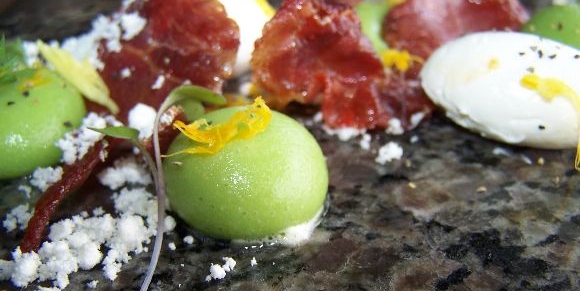
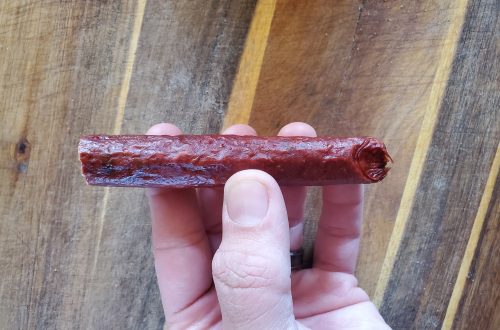
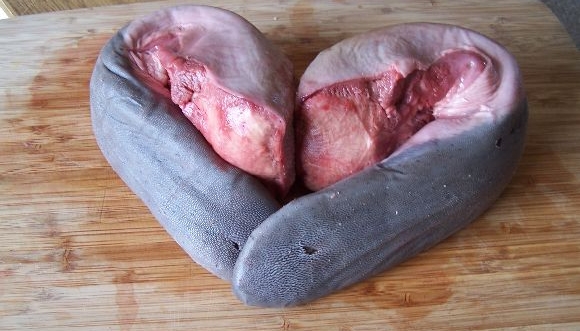

One Comment
Amanda Johnson
Fantastic, I’ve always been very curious about how that works! I love your images.. they really help tell your story. Love it!